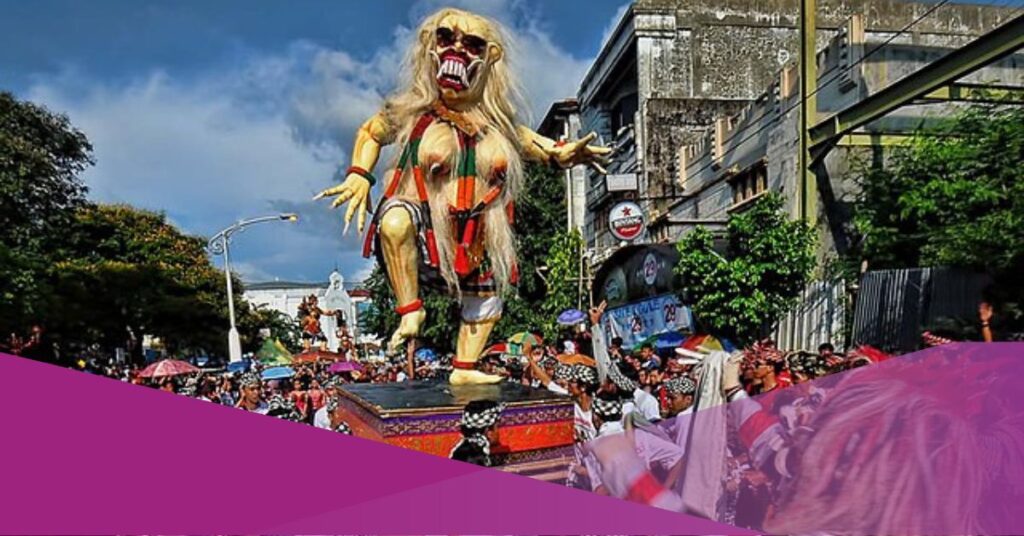In the Balinese Hindu tradition, ogoh-ogoh sculptures are a distinctive and intricate type. These imposing and expertly crafted figures are frequently made of light materials like bamboo, paper mache, and foam, and are frequently decorated with vibrant colours, intricate patterns, and exquisite details.
During the Balinese New Year festival known as Nyepi, they are typically made as purification symbols and paraded through the streets before being burned in a ceremonial bonfire. Each ogoh-ogoh sculpture is a reflection of the Balinese people’s intense devotion to their culture and religion and is a labour of love for them to create.
The Origins of Ogoh-ogoh
There are several theories about the origins of ogoh-ogoh. There are at least three versions of ogoh-ogoh history in Bali.
To begin, some claim that the ogoh-ogoh originated during the Dalem Balingkang period. They were used in the Pitra Yadnya ceremony at the time. Second, some believe that the ogoh-ogoh descended from the Ngusaba Ngong-Nging tradition of Karangasem’s Selatan village.
Third, some believe that ogoh-ogoh is caused by the presence of Barong Langung, the form of King Jaya Pangus and Princess Kang Cing Wei. The origin of the ogoh-ogoh in Nyepi rituals is thought to be the tradition of pronouncing two male-female ogoh-ogohs as a visualisation of Barong Langung.
Characteristics and Materials
Ogoh-ogoh is a large bamboo and other material sculpture. Ogoh-ogohs are depicted as having large, long nails and frightening faces.
Ogoh-ogoh is typically a buta kala figure or a giant paraded around the village during the pengerupukan night, which also coincides with the tilem kesanga ritual.
Originally, ogoh-ogohs were constructed entirely of simple wooden or bamboo frames wrapped in paper. However, as people’s creativity grew, the sculpture evolved into an extraordinary work of art that has became popular with the general public.
In addition to being present as a buta kala figure, ogoh-ogohs in Bali today are also present in contemporary form. Later, some made the parade a platform to mimic things from controversial events until fictional characters are considered to represent evil.
The Role in Nyepi Ceremonies
Ogoh-ogoh parade is usually held on a day before Nyepi, which is intended to absorb the negative energy in their surroundings.
A series of pengerupukan precedes the parade of the ogoh-ogoh, beginning with the procession of Tawur Agung Kesanga. Tawur Agung Kesanga is typically implemented during the day, or people usually call it tengai tepet. Meanwhile, the parade takes place from the afternoon (sandikala) until the evening.
After being paraded around the village, the sculptures were burned, or pralina, as the locals called it. The burning of ogoh-ogoh is frequently interpreted as an attempt to eliminate evil, which is represented by blindness on the face of the earth. The following day, the people of Bali celebrated the Saka new year, or Nyepi, in silence and performed the Catur Brata Persepian ritual for the whole day.
The ogoh-ogoh parade was eagerly anticipated in the run-up to Nyepi. It is also an occasion that fosters the creativity of locals, particularly young members of the Bali community.
Interested in learning more about Bali and its culture? Check out these articles below:





































